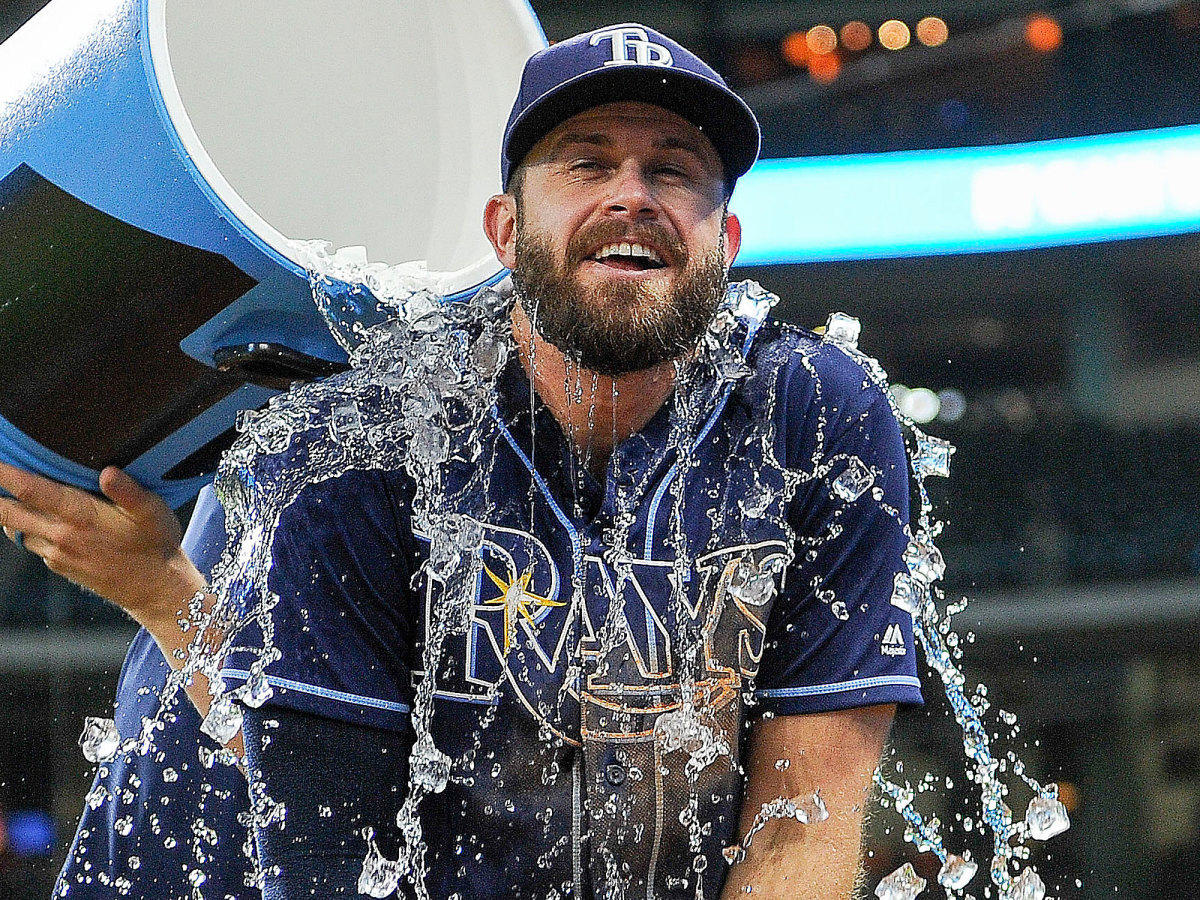In Praise Of Cycles: Evan Longoria Joins Club That Should Be Appreciated More Than Ever

Here’s to Rays third baseman Evan Longoria, who hit for the cycle Tuesday night in a 6-4 win over the Astros in Houston. It was just the second cycle in Tampa Bay's 20-year history and the first in the sport to require instant replay, as Longoria's ninth-inning double was affirmed only after umpires reversed the original call that he had been out at second base.
We watch baseball not only to see great things happen but to see things we truly haven’t seen before—say, a player getting ejected days before his 3,000th hit for dragging the on-deck circle closer to the plate. In the absence of genuine novelty, we delight in rarity, seeing things that happen without incredible frequency. And in this light I figure the cycle is genuinely underappreciated.
Today's warped game, after all, offers new definitions of rarity. There are some things we're seeing more of than we're used to: walks, strikeouts, home runs. And there are some things we're seeing less of: singles, doubles, triples. Singles aren't rare and homers aren't ubiquitous, but anyone who has been watching the game for more than a few years has noticed the baseline shifting.
MLB Trade Deadline Winners (Yankees, Dodgers) and Losers (Red Sox, Mets)
Baseball, in the aggregate, is on pace this year to produce just over 27,000 singles, which would be the lowest number in the 30-team era, which dates to 1998. Compare that to 1999, which featured more singles than any season ever: 30,128. From '98 through 2011, no season included fewer than 28,000 singles.
Major league hitters are also on pace to produce just 777 triples all season, which, if it held, would be the second-lowest number (behind 2013) in any non-strike-shortened season since 1968, when there were about 1,600 fewer games. Baseball now has eight times as many homers as triples; a decade ago, the ratio was five to one. And even doubles have taken something of a dip. From 2000 to '08, the league was doubles-rich, with about 1.9 doubles per game. These days, the number is under 1.8. These are small changes, but they’re real ones, and they are seemingly here to stay.
The cycle has always been viewed as less cool than a no-hitter, but the two events have basically been equally rare throughout the grand sweep of baseball history. Before Tuesday, there had been 318 cycles, according to Retrosheet, and 296 no-hitters. Through 1997 the totals were nearly identical, with 237 cycles and 245 no-hitters. But in the 20 subsequent seasons, including this year, there have been 51 no-hitters and 81 cycles.

Compared to cycles, no-hitters also benefit in the imaginations of sports fans from the list of which pitchers and hitters have accomplished the feats. Among the pitchers this decade alone to throw no-hitters or perfect games are brand names like Cy Young Award winners Jake Arrieta, Roy Halladay, Felix Hernandez, Tim Lincecum, Johan Santana, Max Scherzer and Justin Verlander. Meanwhile, the list of cycles since 2010 is comprised of—alongside Longoria, Cody Bellinger, and Nolan Arenado—plenty of career duds, including Brandon Barnes, Jody Gerut, Scott Hairston, George Kottaras and Aaron Hill—the last of whom famously did so twice in a fortnight in June 2012.
Then there's the simple fact that no-hitters tend to be more consequential to the outcome of a particular game than cycles do. For the last 25 cycles, the average win probability added was 0.28, a little less than a third of a win. For the last 25 starters to throw a complete-game no-hitter, it was 0.44, or a little less than half a win. One 21-year-old outfielder, in 2013, even managed to achieve something with a cycle previously thought impossible—he actually hurt his team in WPA. (His team won by 12, while he went four for five, striking out in his first at-bat. It was Mike Trout. He really can do anything.) The no-hitter seems a display of dominance; the cycle a statistical quirk.
Adrian Beltre Is Already a Hall of Famer—Reaching 3,000 Hits Only Pads His Plaque
Having said all that, the cycle is a great and surprising feat, and it’s time to recalibrate our relative appreciation for it. Consider the 2017 Athletics. As a group, they’re hitting .238. They have struck out 995 times. Hardly different are the Padres, who are hitting .235, with 990 strikeouts. How hard could those clubs be to no-hit? Why haven’t they been no-hit already?
Meanwhile, the average club has hit just 17 triples to date in 2017. Three whole teams are still in the single digits with the Blue Jays and their miniscule total of four bringing up the rear. Charlie Blackmon of the Rockies, who already has 13, could very well wind up the season the only hitter in double digits. Big leaguers just aren’t hitting triples anymore, leaving precious few opportunities to complete the cycle.
Greater plaudits, then, are due to Longoria, Bellinger, Arenado, Carlos Gomez, Trea Turner, Wil Myers and whoever else is bound to join them in cycledom in 2017. Variety is the spice of life—and baseball.
